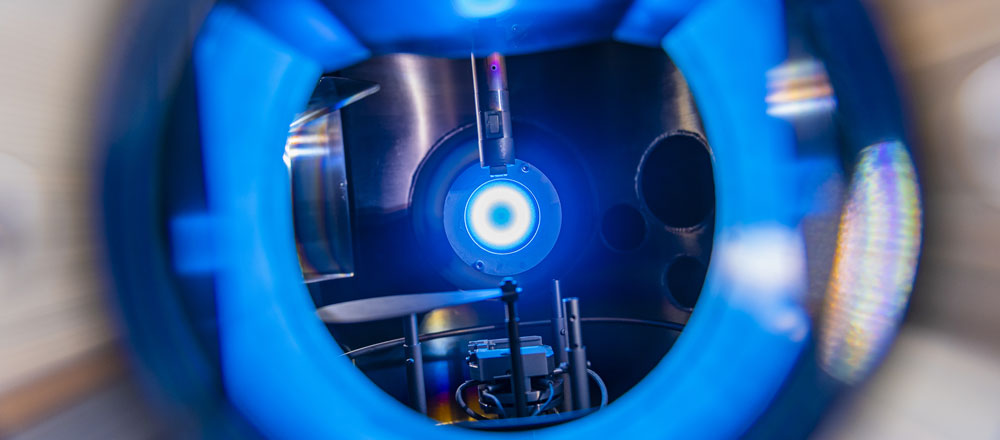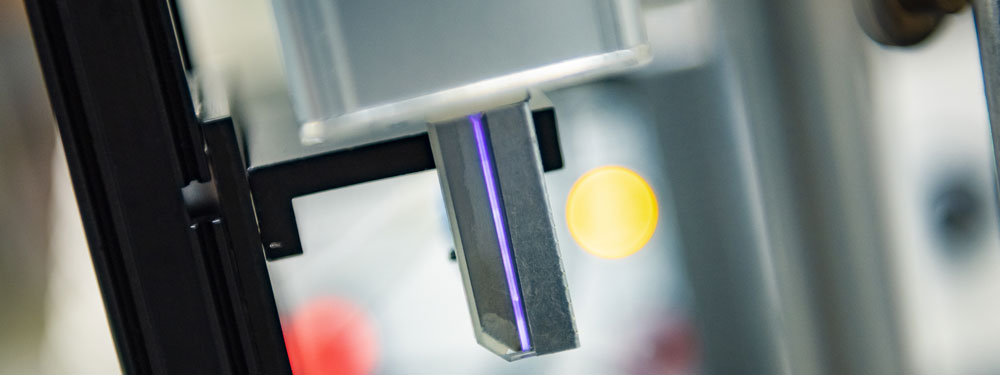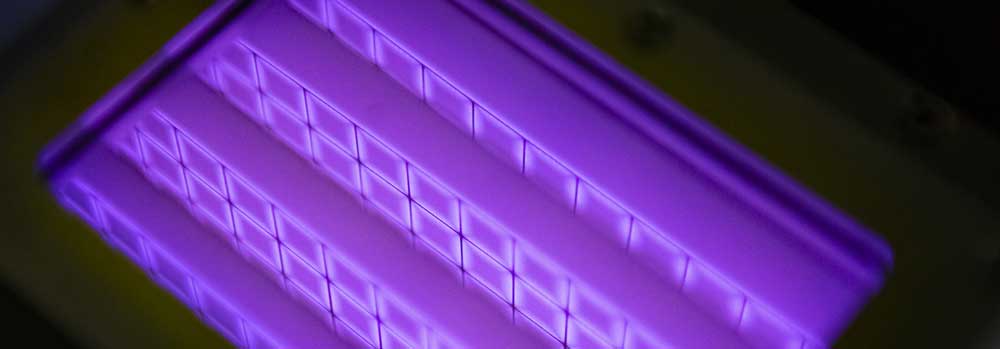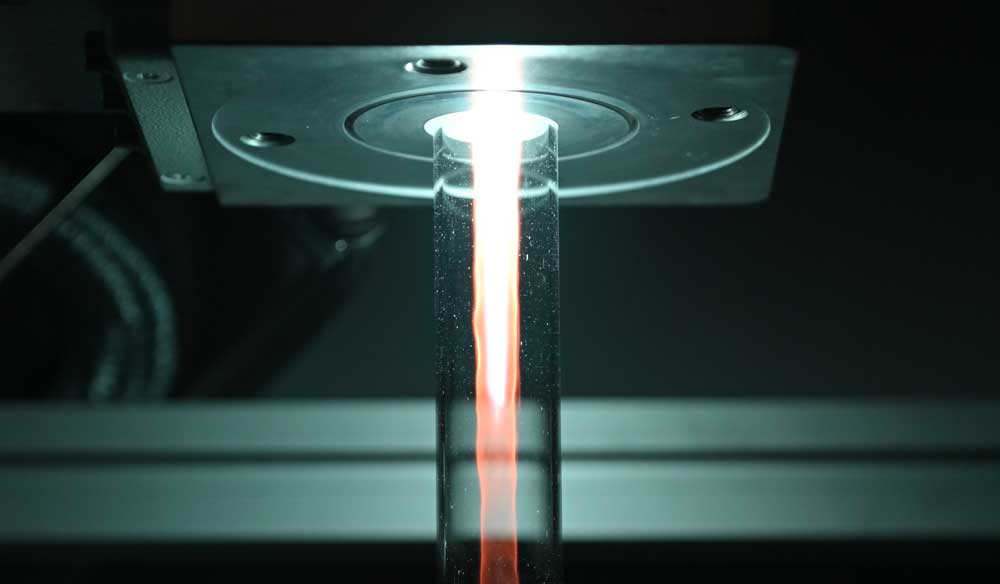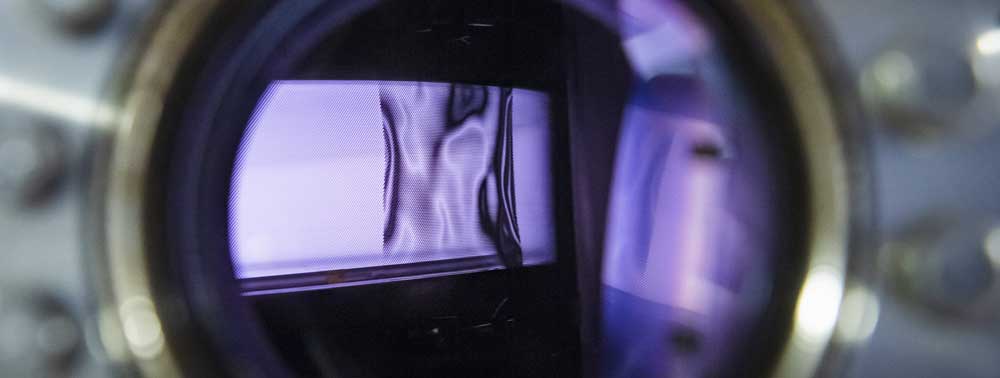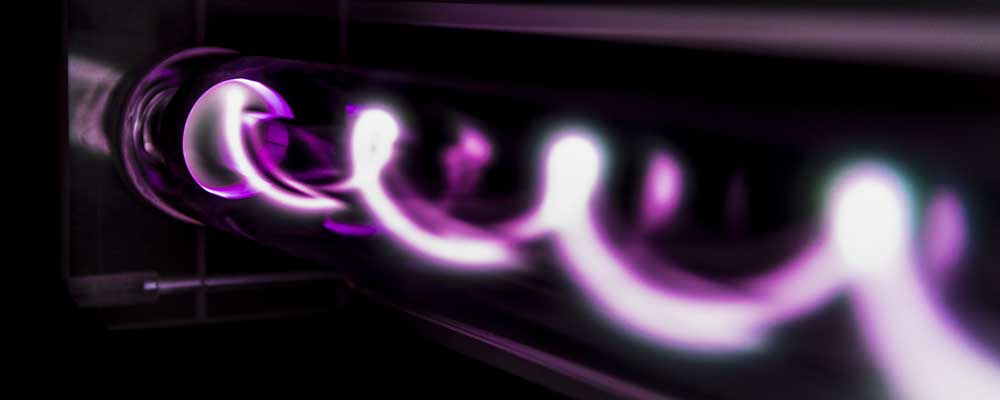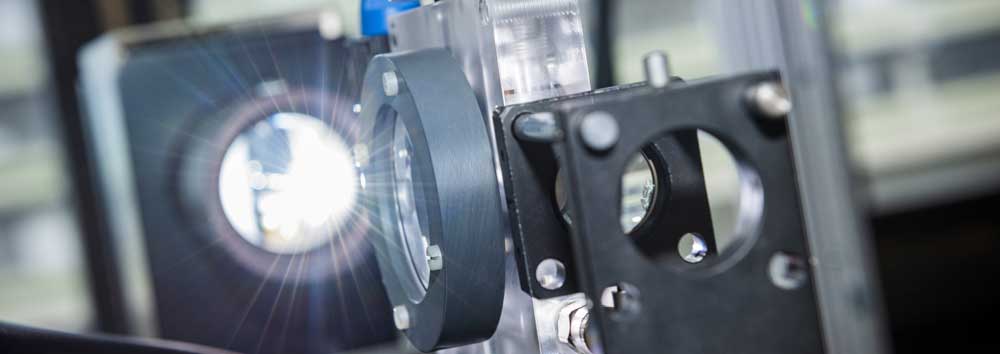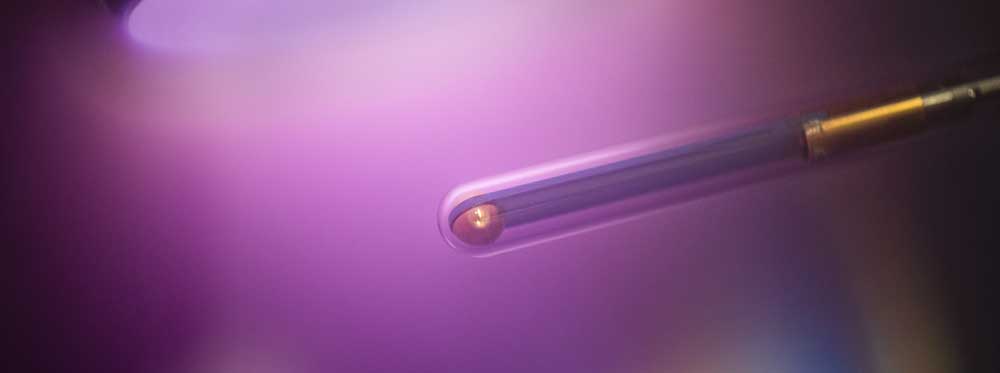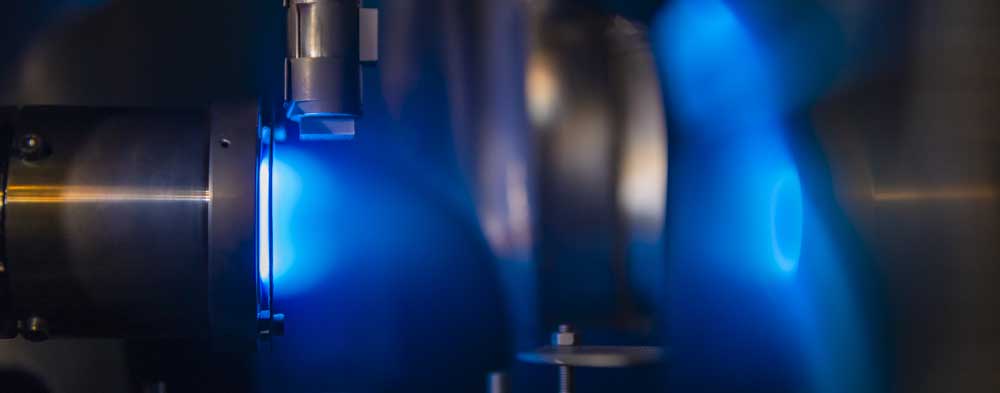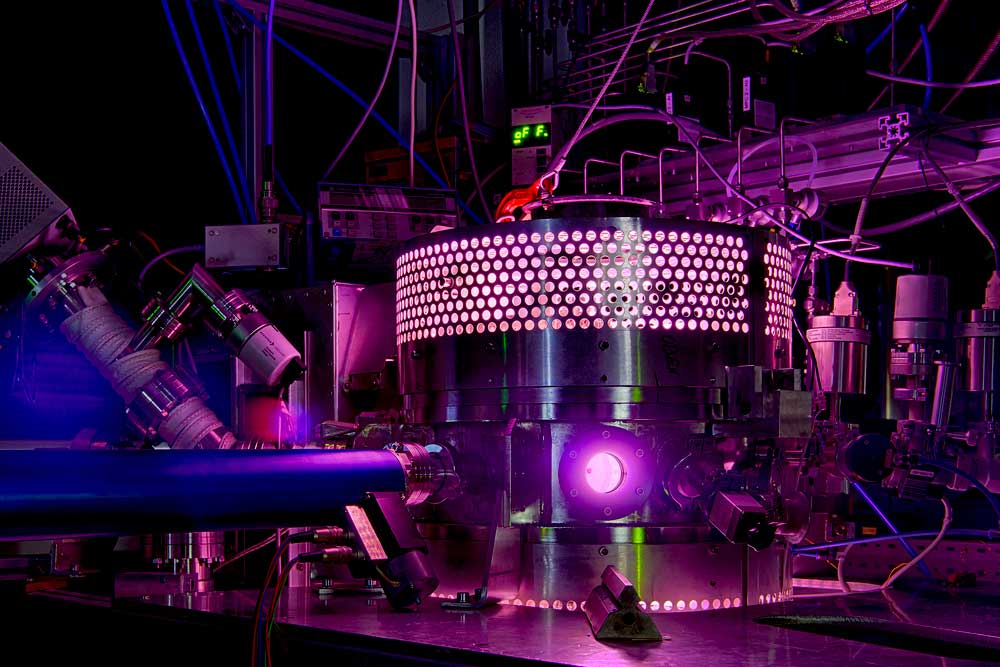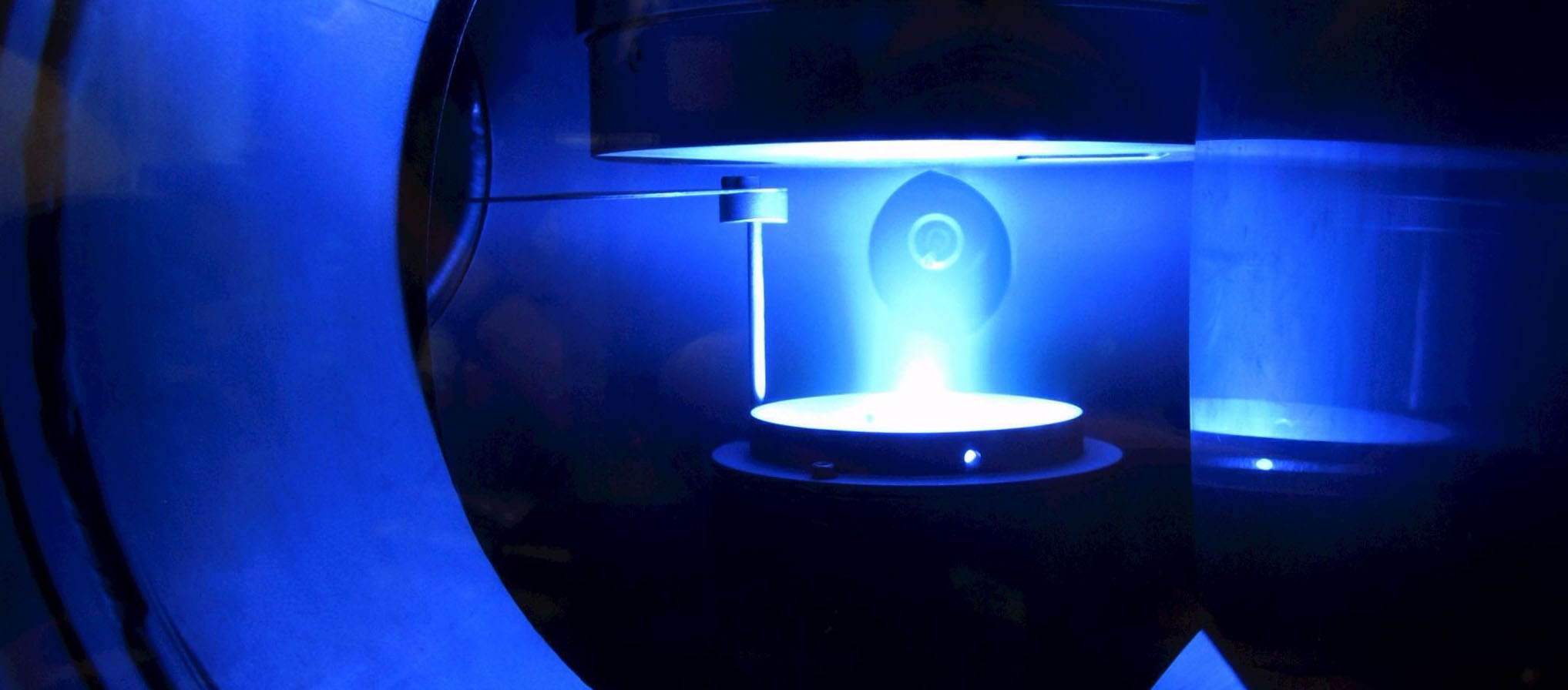- Details
PUBLIC RELATIONS
The student's project week during the fall vacations
 The project week at the Ruhr University Bochum took place again this autumn break. Students could choose from three workshops. In the workshop 'From Plasma to Gold Layer', they learned exciting facts about the properties and diverse applications of plasmas. The students used the sputter coater to create thin layers of gold and examined the coatings. They investigated the best way to deposit the layers and presented their research in a poster session. The project week also provided an opportunity to learn about the working environment of scientists and current research projects and to get a taste of university life.
The project week at the Ruhr University Bochum took place again this autumn break. Students could choose from three workshops. In the workshop 'From Plasma to Gold Layer', they learned exciting facts about the properties and diverse applications of plasmas. The students used the sputter coater to create thin layers of gold and examined the coatings. They investigated the best way to deposit the layers and presented their research in a poster session. The project week also provided an opportunity to learn about the working environment of scientists and current research projects and to get a taste of university life.
- Details
Plasma School
As a PhD student at the plasma school, a personal account
In October 2024, I attended the Plasma School in Bad Honnef. I gained deeper knowledge, particularly in plasma diagnostics.
 The five-day program was packed with a diverse range of lectures, covering topics such as plasma diagnostics, plasma modeling, and hands-on plasma experiments. The structure of the program, which seamlessly transitioned from broader concepts to more detailed explorations, allowed students to fully engage with the material. We were attentive and actively participated, asking thoughtful questions and sharing insights. This created a highly interactive learning environment where everyone gained fresh perspectives and valuable insights for their individual projects.
The five-day program was packed with a diverse range of lectures, covering topics such as plasma diagnostics, plasma modeling, and hands-on plasma experiments. The structure of the program, which seamlessly transitioned from broader concepts to more detailed explorations, allowed students to fully engage with the material. We were attentive and actively participated, asking thoughtful questions and sharing insights. This created a highly interactive learning environment where everyone gained fresh perspectives and valuable insights for their individual projects.
Collaboration was a key aspect of the event – we supported one another throughout the week, enhancing both individual and collective learning. Special mention goes to the evening lectures and poster sessions, which provided a relaxed atmosphere to deepen our understanding and connect with new friends and colleagues in the field.
 A big thank you to the trainers who made this opportunity possible and to those who travelled from afar to share their expertise with us in Bad Honnef. The plasma school was an enriching and inspiring experience for everyone involved.
A big thank you to the trainers who made this opportunity possible and to those who travelled from afar to share their expertise with us in Bad Honnef. The plasma school was an enriching and inspiring experience for everyone involved.
Amy Cheng, PIP-group, Ruhr University Bochum
- Details
Public Relations
Open house with the mouse
On 3th October, the Faculty of Physics at the Ruhr University Bochum invited children to the Mouse Day. After the physics show, the children experimented in numerous workshops and explored the world of physics. Participants learned about plasmas and their important applications in the plasma workshop, such as coating surfaces. They were able to ignite plasmas, experiment and coat samples using the sputter coater.
- Details
Conference
Two PhD Students at Hakone conference
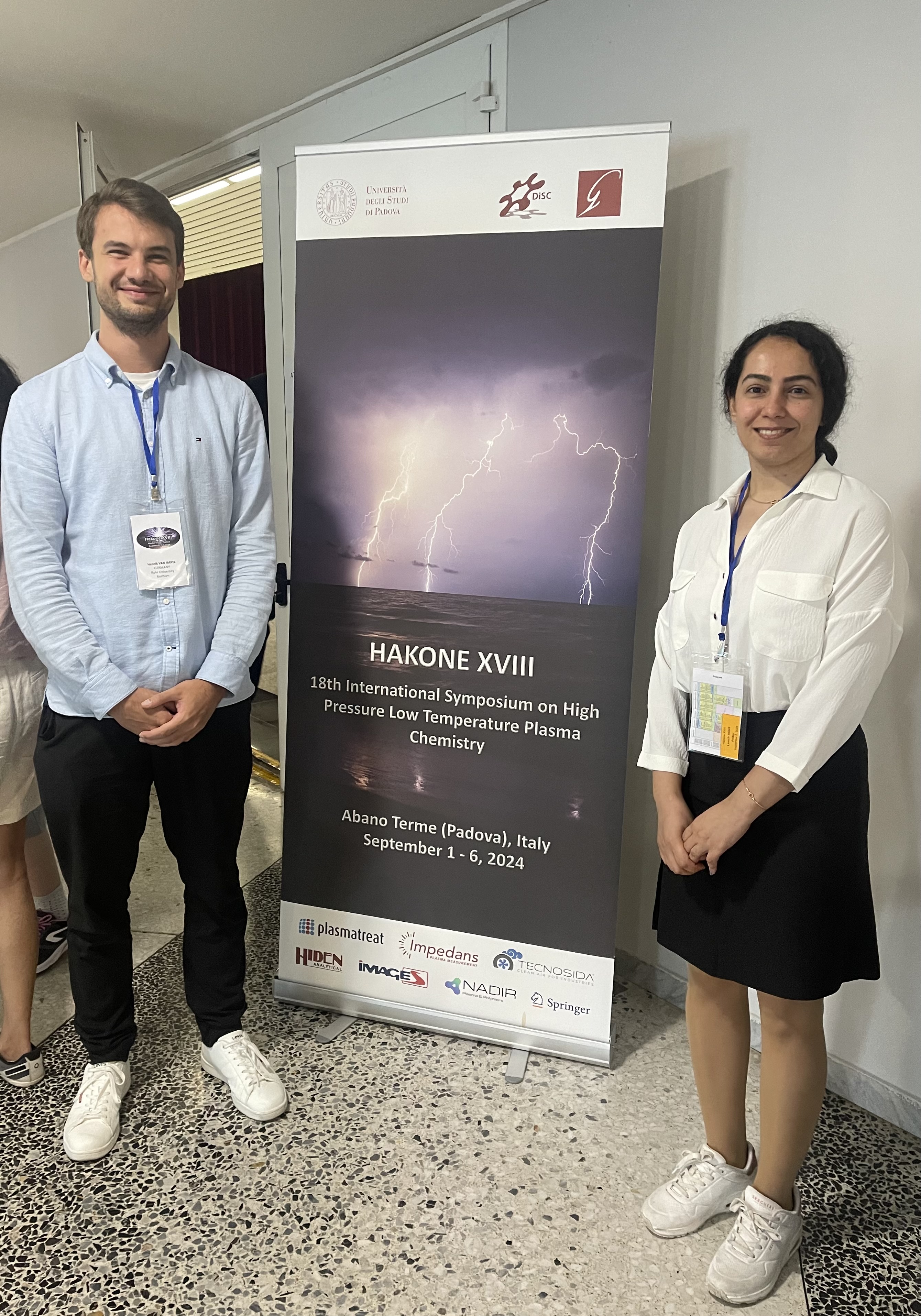 Soad Mohsenimehr and Henrik van Impel (A6) gave presentations on their latest research at the 18th Hakone Conference, which took place in Padua, Italy, from September 1st to 6th, 2024. The event featured numerous insightful presentations dealing with low-temperature plasmas at atmospheric pressure and their applications in plasma chemical processes. One of the highlights of the conference was the active participation of students: 22 of the 56 presentations were given by PhD students, which created a very appealing environment for young researchers. In particular, dielectric barrier discharges were discussed in terms of their efficiency when used with catalysts and the basic physical dynamics of the discharges. Other topics included plasma applications in agriculture and food processing as well as the interaction between plasma and liquid. In addition to the scientific findings, the conference provided an excellent platform for PhD students to network with international participants from 24 countries, promoting collaboration between disciplines.
Soad Mohsenimehr and Henrik van Impel (A6) gave presentations on their latest research at the 18th Hakone Conference, which took place in Padua, Italy, from September 1st to 6th, 2024. The event featured numerous insightful presentations dealing with low-temperature plasmas at atmospheric pressure and their applications in plasma chemical processes. One of the highlights of the conference was the active participation of students: 22 of the 56 presentations were given by PhD students, which created a very appealing environment for young researchers. In particular, dielectric barrier discharges were discussed in terms of their efficiency when used with catalysts and the basic physical dynamics of the discharges. Other topics included plasma applications in agriculture and food processing as well as the interaction between plasma and liquid. In addition to the scientific findings, the conference provided an excellent platform for PhD students to network with international participants from 24 countries, promoting collaboration between disciplines.
- Details
Workshop
Japanese-German Workshop on Low-Temperature Plasma Application
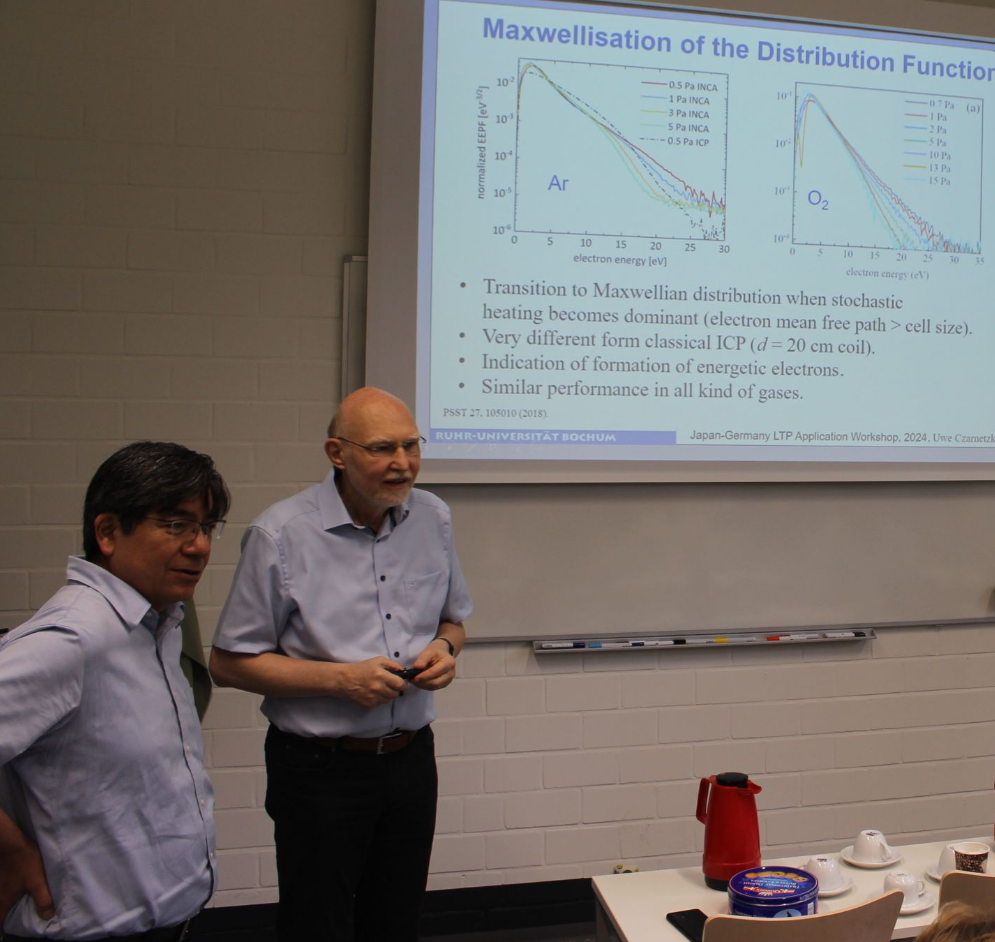 A workshop with guests from Japanese universities/ research institutions and members of the chair of Experimental Physics V was held on 25th and 26th of July. Initiated by Prof. Aramaki from Nihon University, the workshop brought together long time collegues who stayed as collaborators at EP V during the last 20 years. All of them conduct research in the field of low temperature plasmas. This covers a broad range from the application for agriculture or semiconductor fabrication as well as developing new kinds of diagnostics like vortex laser spectroscopy. With these topics a perfect overlap with the research of the CRC is given so that the workshop consists not only of one day of presentations but also one day of laboratory visits allowing for the guests to get an overview of the current local plasma research.
A workshop with guests from Japanese universities/ research institutions and members of the chair of Experimental Physics V was held on 25th and 26th of July. Initiated by Prof. Aramaki from Nihon University, the workshop brought together long time collegues who stayed as collaborators at EP V during the last 20 years. All of them conduct research in the field of low temperature plasmas. This covers a broad range from the application for agriculture or semiconductor fabrication as well as developing new kinds of diagnostics like vortex laser spectroscopy. With these topics a perfect overlap with the research of the CRC is given so that the workshop consists not only of one day of presentations but also one day of laboratory visits allowing for the guests to get an overview of the current local plasma research.
- Details
Conference
Five Posters at ESCAMPIG
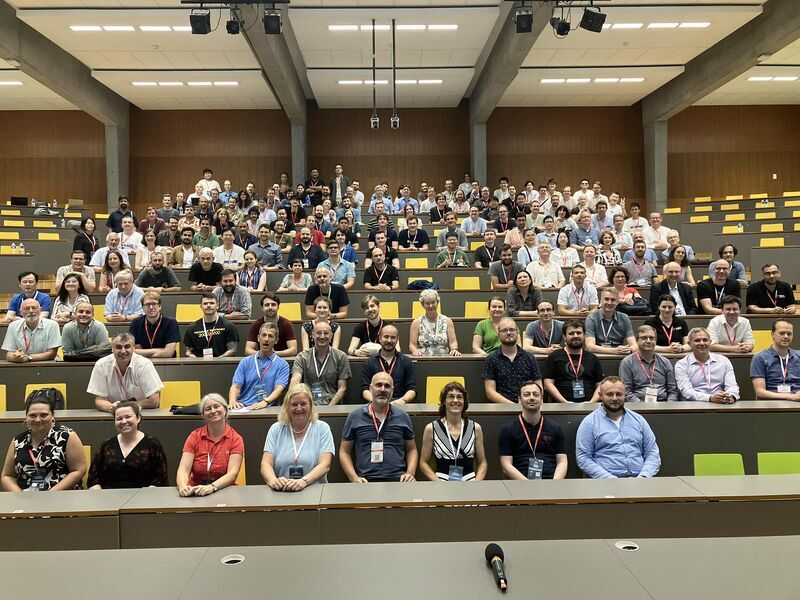 This year's ESCAMPIG conference took place in Brno, Czech Republic. Three members of Experimental Physics II and one member of AEPT from Bochum took part and contributed to the conference with five posters. In addition to the interesting plenary lectures by well-known personalities such as Peter Bruggeman (USA), Luís L. Alves (Portugal), Kinga Kutasi (Hungary) and Holger Kersten (Germany), there was a variety of around 160 other posters on both modelling and experimental topics. In addition to the professional exchange, the conference offered excellent evening events, such as the welcome party with a dance class and Czech specialities or the conference dinner with live music and a cosy atmosphere. We had many interesting discussions at the conference and met new and old acquaintances, which is why we came away from the conference with very positive experiences overall.
This year's ESCAMPIG conference took place in Brno, Czech Republic. Three members of Experimental Physics II and one member of AEPT from Bochum took part and contributed to the conference with five posters. In addition to the interesting plenary lectures by well-known personalities such as Peter Bruggeman (USA), Luís L. Alves (Portugal), Kinga Kutasi (Hungary) and Holger Kersten (Germany), there was a variety of around 160 other posters on both modelling and experimental topics. In addition to the professional exchange, the conference offered excellent evening events, such as the welcome party with a dance class and Czech specialities or the conference dinner with live music and a cosy atmosphere. We had many interesting discussions at the conference and met new and old acquaintances, which is why we came away from the conference with very positive experiences overall.
- Details
Conference
ISPCEM Success: Prize Awarded to Steijn Vervloedt
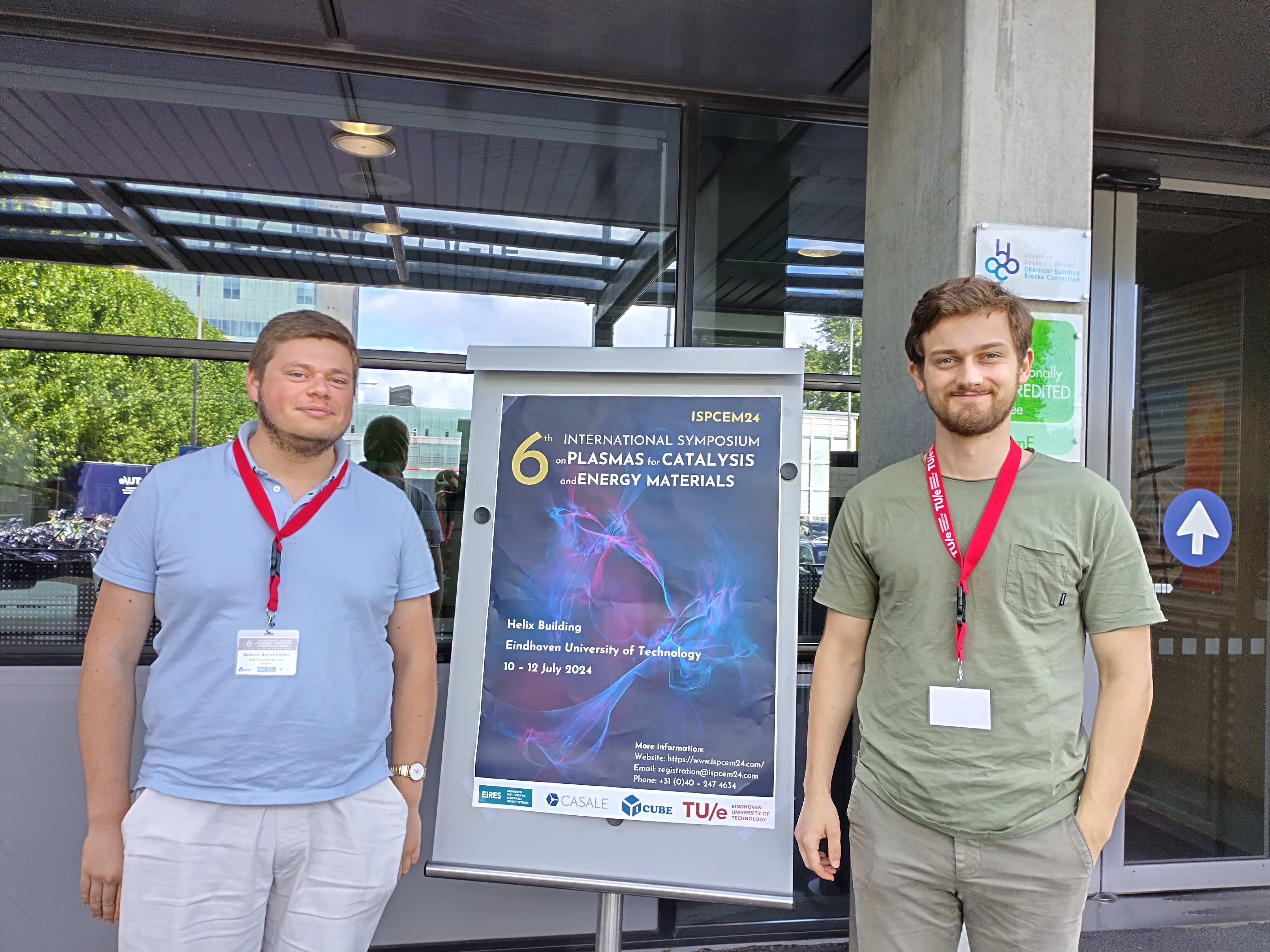 Gabriel Boitel-Aullen (project B13) and Steijn Vervloedt (project A3) took part in the 6th International Symposium on Plasmas for Catalysis and Energy Materials (ISPCEM) in Eindhoven, from 10th to 12th of July. During the two-and-a-half-day event, presentations were given on the latest advances in plasma catalysis, ranging from nitrogen fixation to the dissociation of CO2 and the formation of hydrocarbons. Gabriels and Steijns plasma catalysis measurements are usually done with DBD’s, highlighting the ease of installing and operating such discharges. Also, a few presentations on the plasma-assisted synthesis of catalysts, which is the topic of project B13. Our researchers were allowed to orally present the recent developments of their projects, where Steijn was awarded with the best oral presentation.
Gabriel Boitel-Aullen (project B13) and Steijn Vervloedt (project A3) took part in the 6th International Symposium on Plasmas for Catalysis and Energy Materials (ISPCEM) in Eindhoven, from 10th to 12th of July. During the two-and-a-half-day event, presentations were given on the latest advances in plasma catalysis, ranging from nitrogen fixation to the dissociation of CO2 and the formation of hydrocarbons. Gabriels and Steijns plasma catalysis measurements are usually done with DBD’s, highlighting the ease of installing and operating such discharges. Also, a few presentations on the plasma-assisted synthesis of catalysts, which is the topic of project B13. Our researchers were allowed to orally present the recent developments of their projects, where Steijn was awarded with the best oral presentation.
- Details
Plasma Truck
The Plasma Truck is on the road again!
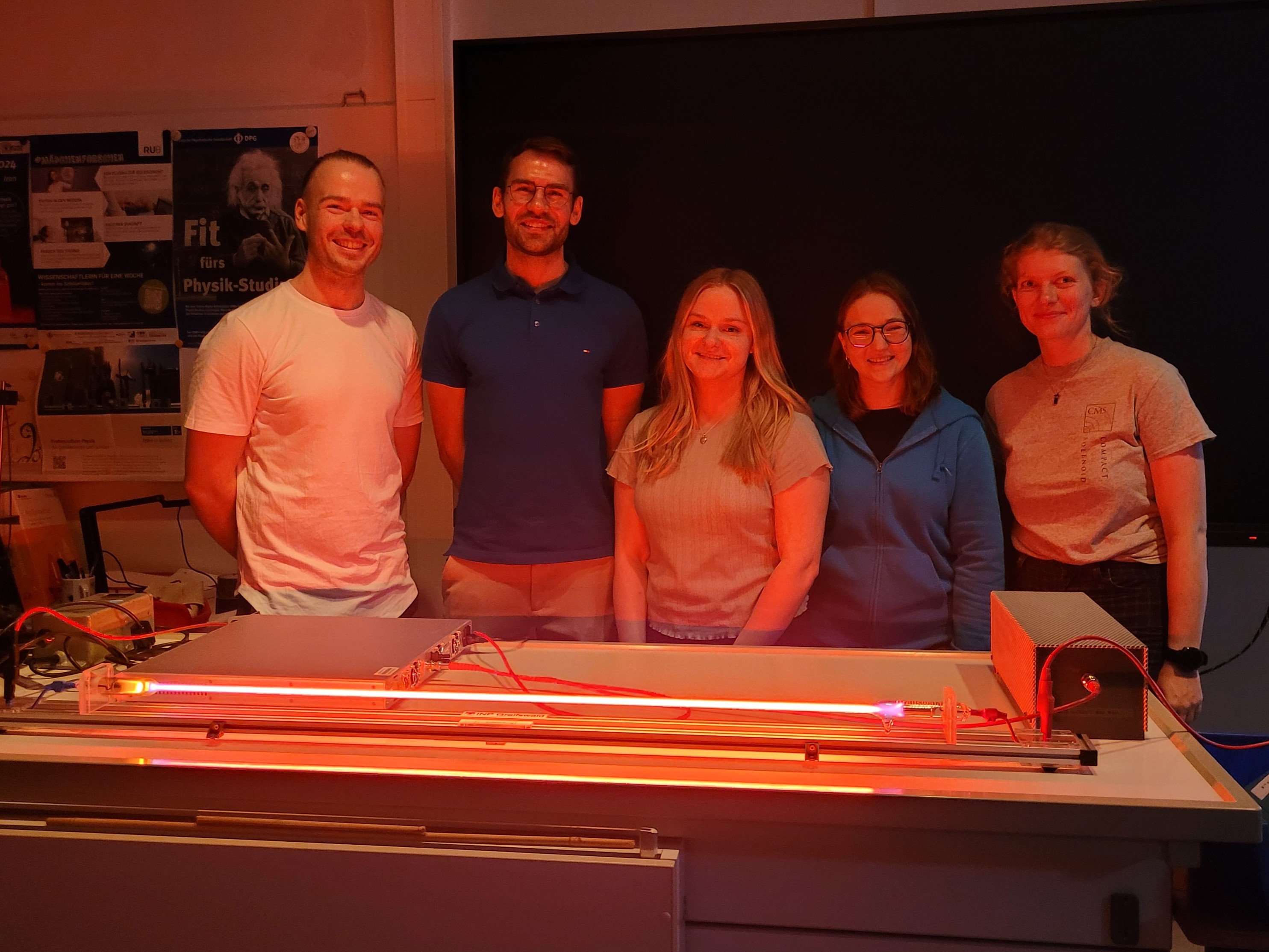 On 20th June, physics students and PhD students in physics and electrical engineering from Ruhr-University Bochum visited the Burggymnasium Essen. The high school students from grades 11 and 12 participate in the mobile workshop. They conducted exciting plasma experiments, used a spectrometer to analyse the light emission and observed how plasmas can be influenced by electrical and magnetic fields. The workshop was a success and the students showed great interest.
On 20th June, physics students and PhD students in physics and electrical engineering from Ruhr-University Bochum visited the Burggymnasium Essen. The high school students from grades 11 and 12 participate in the mobile workshop. They conducted exciting plasma experiments, used a spectrometer to analyse the light emission and observed how plasmas can be influenced by electrical and magnetic fields. The workshop was a success and the students showed great interest.
Although plasma physics is not part of the curriculum, some experiments in school lessons involve plasmas. The mobile workshop was developed to familiarise high school students with the concept of plasma. Experiments were designed that can be transported to school in a minibus. During the 90-minute workshop, the students experiment in small groups and learn about plasmas and their various applications.
- Details
DFG
CRC 1316 is part of the annual report 2023 of the German Science Foundation
The research of CRC1316 is highlighted in the German Science Foundation's annual report. Under the title "Electrifying with Plasmas," the various conversion strategies are explained and illustrated based on the CRC's individual projects.


